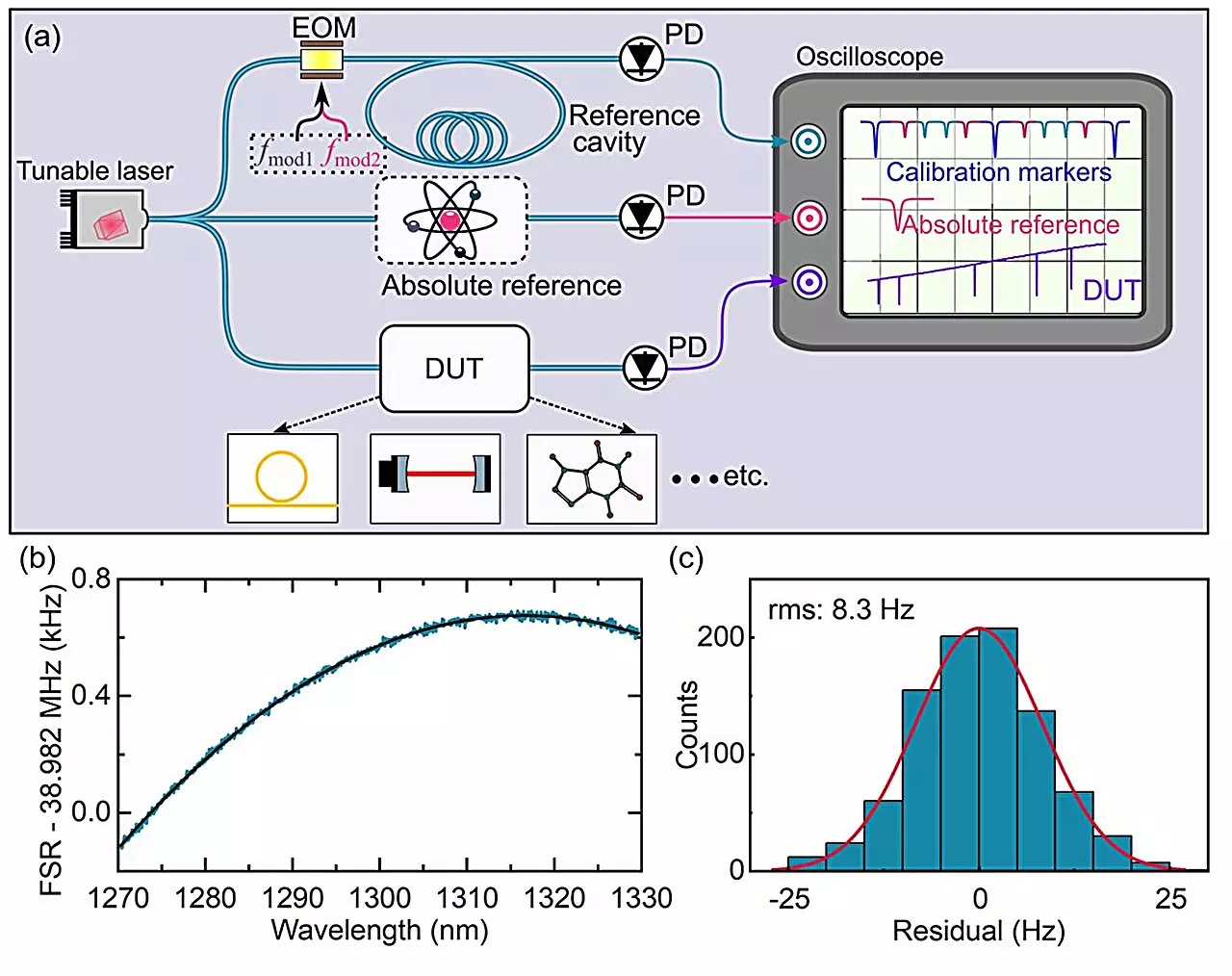Since its advent alongside the introduction of the laser in the 1960s, laser spectroscopy has revolutionized the landscape of atomic and molecular analysis. This technology allows scientists to explore the intricate structures and dynamic behaviors of matter at an unprecedented level of detail. As laser technology has evolved, so too have the methods and techniques associated with spectroscopy, significantly enhancing our understanding of physical phenomena and expanding the realms of scientific exploration.
Two prominent methodologies have emerged within the domain of laser spectroscopy: frequency comb-based laser spectroscopy and tunable continuous-wave (CW) laser spectroscopy. Frequency comb techniques have garnered extensive acclaim for their exceptional measurement accuracy—reaching precision levels that can be expressed to 18 decimal places. This accuracy was significant enough to earn the 2005 Nobel Prize in Physics, highlighting its groundbreaking contribution to numerous applications, such as optical clock technology and gravitational measurements. Moreover, frequency combs facilitate high-speed broadband spectroscopy, offering a rare blend of broad bandwidth capability and minute spectral resolution.
However, despite their remarkable benefits, frequency combs also have inherent limitations. Each comb mode produces relatively low power, which can pose challenges when it comes to detecting trace gases, and the sizeable gaps present between the comb modes necessitate supplementary techniques to capture spectrally narrow features. Furthermore, to achieve high-fidelity measurements, it is essential for comb sources to maintain long-term coherence, requiring sophisticated stabilization setups that can complicate their practical application.
On the other side of the spectrum, tunable CW lasers provide their distinct advantages, characterized by high photon flux and flexibility in frequency adjustment. These features lend themselves well to sensitive applications, such as molecular spectroscopy, gas sensing, and laser-based detection systems (LIDAR), all of which benefit from superior signal-to-noise ratios. Nevertheless, tunable lasers are not without their flaws; the variability in scan speeds can undermine frequency stability during operations.
In response to these challenges, researchers have devised several innovative techniques—interferometric methods, single-sideband modulation, and the integration of optical frequency combs—which aim to enhance the overall reliability and performance of tunable laser systems. An exciting innovation in this area is the continuous-wave laser spectroscopy calibrated by frequency combs, marrying the high power and tunability of CW lasers with the precise measurement capabilities of frequency combs.
An exciting new development has emerged from the Max Planck Institute for the Science of Light, where researchers have instituted a seamless broadband spectroscopy approach that achieves Hz-level precision using their tunable laser system. Published in the journal Advanced Photonics, this methodology employs novel on-the-fly laser frequency calibration via a fiber cavity and advanced dual radio frequency modulation techniques. This enables continual tracking of the laser’s frequency changes, essentially introducing calibration markers that act like a highly precise optical frequency ruler.
Through this fresh technique, scientists have achieved remarkable measurements of the minute deviations occurring across an 11-THz frequency range with sub-10-Hz precision—an advancement that underscores the effectiveness of this new method compared to traditional tunable laser approaches. Particularly notable is the speed at which these measurements can be conducted, reaching up to 1 THz/s, albeit constrained by the reference cavity’s linewidth.
This pioneering approach holds substantial advantages over frequency comb-based methods, particularly concerning optical probe power and maintaining spectral flatness and polarization stability. Furthermore, this technique has demonstrated its utility in characterizing spectral features of integrated photonic devices, including microresonators, and in analyzing molecular absorption spectra with HF gas, achieving a twofold enhancement in precision relative to existing techniques.
Perhaps most importantly, the simplicity and robustness of this new methodology—free from the complexities of mode locking or phase locking—position it as a favorable option for field use in various applications. Potential uses span from LIDAR systems, which require precise measurements for atmospheric sensing, to 3D imaging technologies. Additionally, its capabilities extend into the characterization of photonic devices and the calibration efforts of astrophysical spectrometers, offering promise across a broad spectrum of scientific and industrial applications.
As laser technology and spectroscopy methods continue to advance in sophistication and capability, they unlock new vistas of possibility across many scientific fields. The development of simplified and more precise techniques, such as those emerging from the Max Planck Institute, presents an opportunity to conduct high-quality and sensitive analyses in diverse environments. Ultimately, these innovations will play a crucial role in the future of photonics and molecular spectroscopy, paving the way for new discoveries that enhance our understanding of the natural world.


Leave a Reply